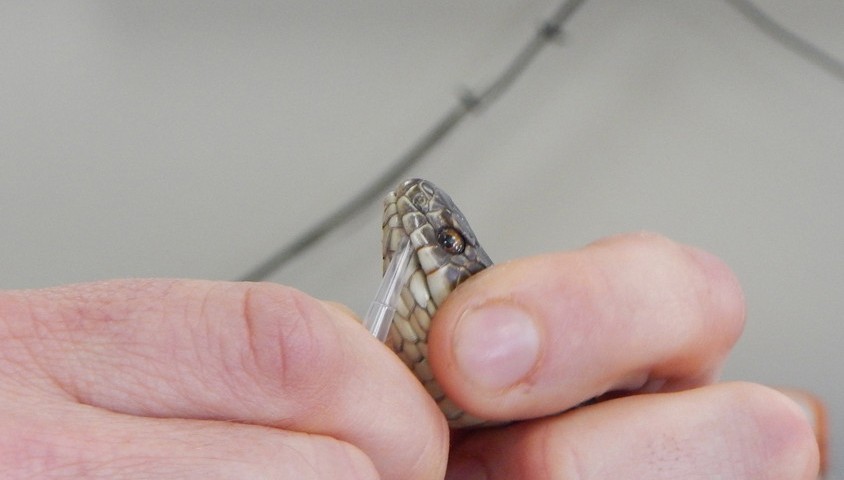The nation’s first venom library is being set up in Melbourne, with researchers working hard to capture venomous species, store their venom and build up a specimen collection.
Dubbed the ‘Victorian Venom Bank’, the project is to be located at Museum Victoria and is being built in partnership between the museum, Melbourne University’s Australian Venom Research Unit and the Department of Environment Land Water & Planning’s Arthur Rylah Institute.
So far, around one dozen specimens of several snake species have been captured in southern Australia, before being transported back to a lab for venom milking and tissue preservation.
Nick Clemann, senior scientist at the Arthur Rylah Institute, told Wild that the immediate focus is to build up a collection of tiger snakes (Notechis scutatus) from various regions, as well as other species closely related to the tiger snake.
“The project has begun with relatively modest resources via a grant from the McCoy Project Seed Fund, so we’ve decided is to target species with a shared evolutionary lineage that are both easy to find in southern Australia, but that are also medically significant,” Clemann said.
Not only are tiger snake bites relatively common in Australia, but the species also covers an exceedingly large territory, which makes studying them more interesting from an evolutionary biology perspective.
“Studying multiple individuals from the one species as well as those from related species can be very informative on a biomolecular level,” he explained. “Differences in the venom expressed by two snakes of the same species from different areas may be caused by differences in diet and habitat, not just genetics, so we hope the Venom Bank will provide the biological resources needed to address these types of questions.
“Similarly, these lines of investigation may let us know if geographically specific antivenoms may be more effective than the current forms.”
Other species collected so far include two species of copperhead snake (Austrelaps ramsayi and Austrelaps superbus), white-lipped snake (Drysdalia coronoides) and small-eyed snake (Rhinoplocephalus nigrescens).
However, the Victorian Venom Bank wasn’t set up to purely focus on venomous snakes; Clemann hopes to one day include many other venomous Australian species.
“The first priority is snakes, but once we’re able to attract further funding we hope to soon expand beyond that,” he said. “Blue-ringed octopus, spiders, scorpions, jellyfish and even platypus* are all possibilities to be considered in the future.”
*While rare, victims of platypus (Ornithorhynchus anatinus) envenomation suffer excruciating pain for days and even weeks after being stung. However, the poison is not known to be lethal for humans.


